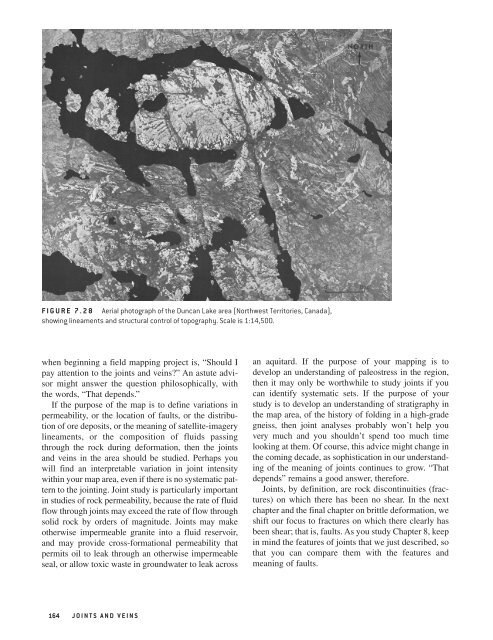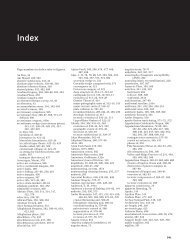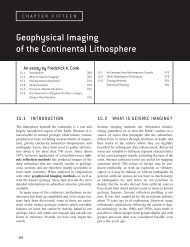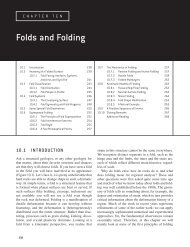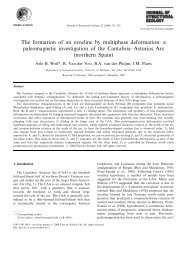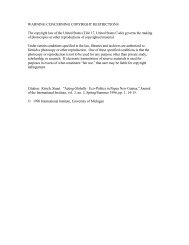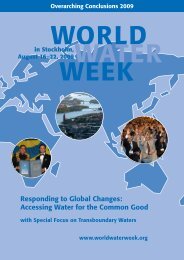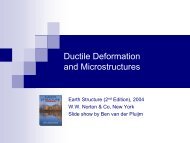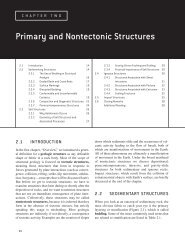Joints and Veins - Global Change
Joints and Veins - Global Change
Joints and Veins - Global Change
- No tags were found...
You also want an ePaper? Increase the reach of your titles
YUMPU automatically turns print PDFs into web optimized ePapers that Google loves.
2917-CH07.pdf 11/20/03 5:11 PM Page 164FIGURE 7.28 Aerial photograph of the Duncan Lake area (Northwest Territories, Canada),showing lineaments <strong>and</strong> structural control of topography. Scale is 1:14,500.when beginning a field mapping project is, “Should Ipay attention to the joints <strong>and</strong> veins?” An astute advisormight answer the question philosophically, withthe words, “That depends.”If the purpose of the map is to define variations inpermeability, or the location of faults, or the distributionof ore deposits, or the meaning of satellite-imagerylineaments, or the composition of fluids passingthrough the rock during deformation, then the joints<strong>and</strong> veins in the area should be studied. Perhaps youwill find an interpretable variation in joint intensitywithin your map area, even if there is no systematic patternto the jointing. Joint study is particularly importantin studies of rock permeability, because the rate of fluidflow through joints may exceed the rate of flow throughsolid rock by orders of magnitude. <strong>Joints</strong> may makeotherwise impermeable granite into a fluid reservoir,<strong>and</strong> may provide cross-formational permeability thatpermits oil to leak through an otherwise impermeableseal, or allow toxic waste in groundwater to leak acrossan aquitard. If the purpose of your mapping is todevelop an underst<strong>and</strong>ing of paleostress in the region,then it may only be worthwhile to study joints if youcan identify systematic sets. If the purpose of yourstudy is to develop an underst<strong>and</strong>ing of stratigraphy inthe map area, of the history of folding in a high-gradegneiss, then joint analyses probably won’t help youvery much <strong>and</strong> you shouldn’t spend too much timelooking at them. Of course, this advice might change inthe coming decade, as sophistication in our underst<strong>and</strong>ingof the meaning of joints continues to grow. “Thatdepends” remains a good answer, therefore.<strong>Joints</strong>, by definition, are rock discontinuities (fractures)on which there has been no shear. In the nextchapter <strong>and</strong> the final chapter on brittle deformation, weshift our focus to fractures on which there clearly hasbeen shear; that is, faults. As you study Chapter 8, keepin mind the features of joints that we just described, sothat you can compare them with the features <strong>and</strong>meaning of faults.164 JOINTS AND VEINS


